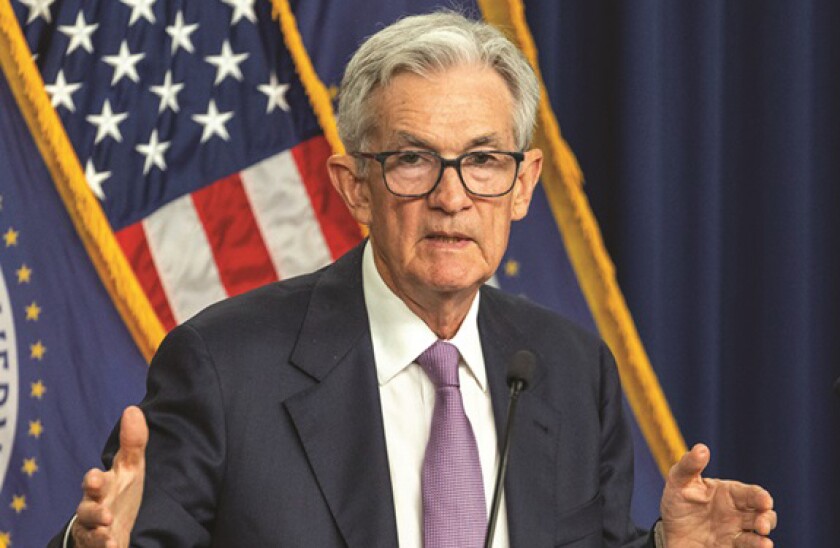A dismal October for US Treasury yields has shattered the cosy consensus that US interest rates can only fall. Market watchers increasingly fear they could rise again, which would strip emerging markets of the cuts in funding costs they had been banking on, and spoil their plans to lower their own interest rates.
Since closing at 3.74% on October 1, the 10 year Treasury yield has climbed steadily, closing at 4.24% on Wednesday — its highest level since July.
The sell-off has been fuelled by the continued strength of the US job market, uncertainty over the US presidential election and the direction of fiscal policy. Three Federal Reserve officials — Jeffrey Schmid, Lorie Logan and Neel Kashkari — have also made comments this week about the need for Fed rate cuts to be gradual.
The upward drift of yields has punctured the lower rates narrative that has buoyed EM bond markets for most of this year.
“Rates are only going one way, and that’s up,” said a senior EM bond banker. “Any issuer with financing needs who is not moving now is wasting time. We’re not going back to the world of low interest rates. The US economy is healthy with higher interest rates than we’ve become used to.”
Swap markets are now pricing in just 37bp of further Fed cuts, said ING analysts on Wednesday. Another EM bond banker said some of his clients had been leaning on the loan market for short term debt in recent years and had been hoping to refinance it in the bond market in early 2025, when they thought rates would have fallen further.
“Even two or three weeks ago, no one was even considering rates rising again,” he said. “Now we’re seeing it’s going to be a bumpy road.”
For EM governments, many of which have been suffering increased financing costs amid serious budget strains, a slowdown or reversal of rate cuts would be particularly painful.
“The main risk factor we see for EM going into 2025 comes from a ‘reflation shock’ scenario in the US, depending on the November election outcome and a potential hawkish turn in the Fed policy outlook, accompanied by a stronger dollar than is currently priced in,” said Petar Atanasov, co-head of sovereign research at investment firm Gramercy.
‘Toxic’ cocktail
One reason for the sell-off in Treasuries has been a perceived greater probability that Donald Trump will win the US presidency in November. A Trump presidency is likely to be more inflationary than a Kamala Harris administration, given the likelihood of higher trade tariffs.
Arthur Budaghyan, chief emerging markets strategist at BCA Research, said in a note this week that a Trump win would lead to a strong dollar and rising US bond yields, which he called a “toxic cocktail for EM domestic bonds and credit spreads”.
He recommended shorting EM sovereign and corporate high yield credit and going long US high yield corporates.
Not everyone is bearish on US rates. Zoltán Kurali, head of Hungary’s debt management office the AKK, agreed that if US long end yields went up to or above 5% it would be “no good for EM issuers, and issuers overall”.
But he was “not convinced” there would be a sustained rise in US yields. Kurali said the market was reacting to the oil price spike, that recent dollar strength was largely technical as the market had shorted the currency in anticipation of fast Fed cuts, and that election-related risk aversion was also priced in right now.
“The European Central Bank will have to continue cutting, irrespective of the Fed, as the European economy is in bad shape, so this will anchor CEE yields hopefully,” Kurali said.
Graham Stock, senior EM sovereign strategist at RBC BlueBay Asset Management, said: “If Treasury yields go much higher from here it could definitely become a problem for emerging markets, but yields were here earlier in the year and issuers still had market access. It would be more of a problem for EM if Treasuries push back up to 5%, or if inflation comes back in the US.”
Yields on 10 year Treasuries have not been above 5% since 2007. Yet the risks of a slowdown in Fed easing are not only about the cost of sovereign debt.
“Potential important changes in economic policy in the US could maintain upward pressure on long term rates globally,” said Andrés Pérez, chief Latin America economist at Itaú. “This kind of scenario would unlikely change the financing scenario for EM sovereigns, but would certainly affect decisions for corporates. Moreover, a stronger dollar and a rebound in inflation could slow projected easing cycles in EM.”
Indeed, one buyside EM economist in Washington this week said his focus was more on what US interest rates meant for local rates in emerging economies.
“For me, the risk of tariffs is that they might put easing cycles in EM on ice,” he said. “No one wants to reverse ferret and have to hike because they’ve cut too much.”
